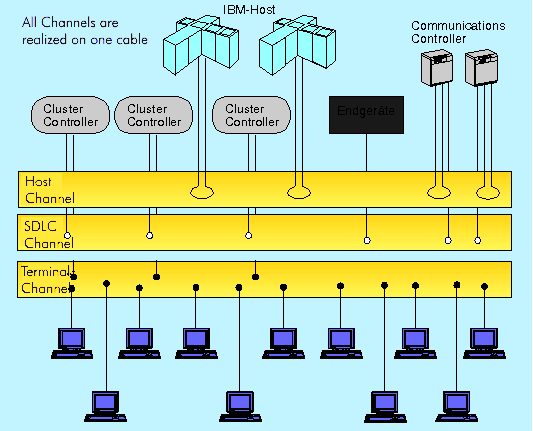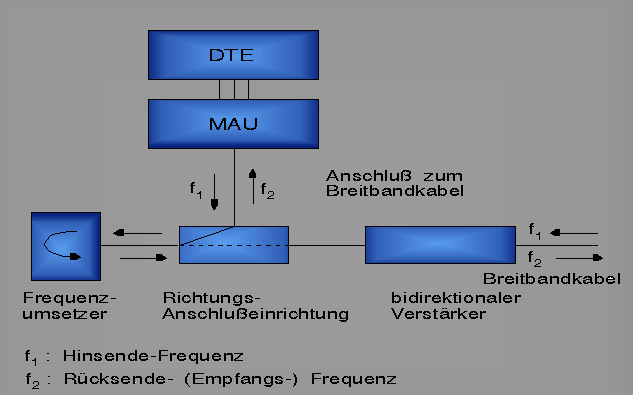broadband transmissions
In broadband transmission, the bandwidth of the transmission medium is divided into several frequency bands. The individual frequency bands can be assigned specific tasks (transmitting or receiving) or types of communication, which can be analog( video, voice) or digital.
The signal base frequencies must be transformed into the corresponding frequency band by modulation. This enables simultaneous transmission of many independent signals over one and the same cable in frequency division multiplex.
There are broadband systems that operate unidirectionally and bidirectionally. In unidirectional networks, the information is fed into the network from the head-end station as in community antenna systems. In bidirectional networks, all stations can be transmitting stations. In order to enable communication between all connected stations despite the directional transmission method, the signal transmissionis first carried out in specified frequency bands in the reverse direction from the data terminal to the head-end station. There, the signals are transformed into the frequency bands specified for forward transmission and then sent from the head-end station in the forward direction to the receiving stations.
In terms of implementation, a distinction is made between single-cable systems and two-cable systems, and between the subsplit, midsplit and highsplitmethods in terms of bandwidth allocation for forward transmission and backward transmission.


